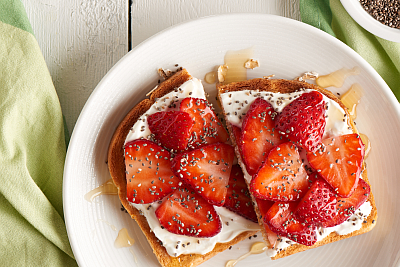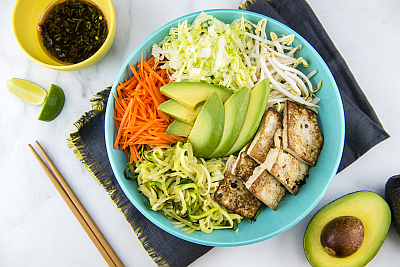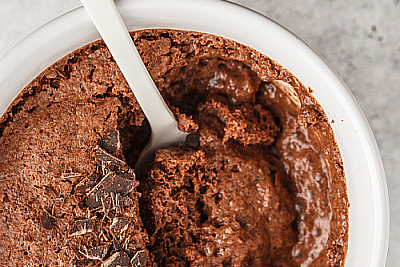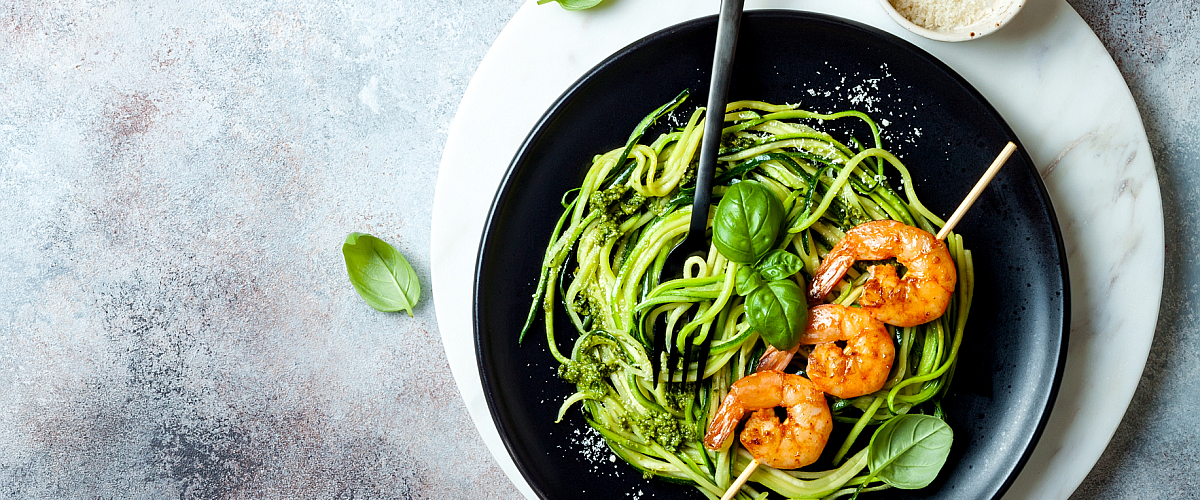It’s tempting to make sweeping lifestyle changes in your quest for better health. But research tells us those dramatic changes often don’t last. (Ever sworn off desserts? You’re not alone!)

That’s because healthy lifestyles are actually built on small, everyday decisions—and many of these habits are born in the kitchen. Instead of doing away with favorite recipes or food groups, think about giving them a health boost instead. This is the magic of swaps and substitutions.
“Recipe swaps are useful when you want to improve the nutrition profile of a dish, or if you’ve run out of an ingredient,” says Chef Lisa Lombo. “The results are just as tasty, and they can make a big difference in the long run.”
Chef Lisa, who is based at a university in Philadelphia, shares better-for-you alternatives to common ingredients, plus some recipes to try.
FULL FAT DAIRY
Dairy products add richness and moisture to many recipes. You can achieve the same effect with some swaps—but with less saturated fat.

- If a recipe calls for butter, margarine or shortening as an ingredient, try usingextra virgin olive oil when sautéing, puréed avocado when baking, or low-fat Greek yogurt in your mashed potatoes or spreads. Or try using cooking spray or a light coat of extra virgin olive oil to prevent sticking.
- If a recipe calls for cream, try using fat-free half-and-half or evaporated skim milk.
- If a recipe calls for cream cheese, try using fat-free/low-fat cream cheese or puréed low-fat cottage cheese.
- If a recipe calls for whole milk, try using low-fat/skim milk or non-dairy milks like almond and soy.
Recipes to try:
GRAINS & STARCHES
This is your chance to introduce more whole grains into your meals. “With their filling fiber and other nutrients, whole grains are a no-brainer compared to their white or processed counterparts,” says Chef Lisa. “Many people come to love their nutty flavor, too.”
- If a recipe calls for dry bread crumbs, try using rolled oats, crushed bran cereal, ground nuts or seeds.
- If a recipe calls for couscous, try using quinoa.
- If a recipe calls for white flour, try using whole-wheat flour (use 7/8 cup for every 1 cup of white).
- If a recipe calls for mashed potatoes, try using mashed turnips or cauliflower

- If a recipe calls for pasta, try using whole-wheat pasta or spiralized veggies.
- If a recipe calls for rice, try using whole-grain brown rice, bulgur, quinoa, pearl barley or riced cauliflower.
- If a recipe calls for flour tortillas, try using whole-wheat, corn or even lettuce wraps.
Recipes to try:
- Cauliflower Potato Mash
- Cauliflower Tabbouleh
- Vietnamese Avocado Zoodle Bowl (#partner: Love One Today)
- Sesame Tofu and Soba Noodle Salad
- Zesty Spinach Pasta Toss
EGGS & MEAT
These savvy substitutions deliver flavor and muscle-building protein but with less fat. They’re also a great way to be more plant-forward in the kitchen.
- If a recipe calls for eggs, try using two egg whites or ¼ cup of egg substitute for each whole egg. For vegan baked goods, ground flax seeds mixed with water works well, too.
- If a recipe calls for ground beef, try using ground chicken or lean turkey breast or mix the meat with oats or vegetables like mushrooms or spinach. Chef Lisa also likes to use ground bison to replace beef. “It’s typically lower in calories and fat than beef—and my kids can never tell the difference!”
Recipes to try:
- Egg White Flatbread with Spinach-Feta Spread
- Turkey Spinach Meatballs
- Spicy Vegetarian Chili with Steel Cut Oats
SEASONING, SAUCES & DRESSINGS
With mayonnaise and sour cream, the calories add up quickly. Meanwhile, prepackaged seasoning blends can be sources of hidden sodium. Chef Lisa offers these easy tricks for keeping both in check.

- If a recipe calls for mayonnaise or sour cream, try using reduced-calorie, reduced-fat versions or low-fat plain Greek yogurt. You can go vegan with aquafaba, the liquid that comes with canned chickpeas. Aquafaba is also a great substitute for whipped cream, like in our Vegan Chocolate Mousse.
- If a recipe calls for seasoning salt (such as garlic, celery or onion salt), try using herbs-only seasonings, such as garlic powder, celery seed, or onion flakes. Chef Lisa also notes that finely chopped fresh herbs, garlic, celery or onions work well. You’ll just need more of the fresh herbs and vegetables to equal the dried amount called for in a recipe.
Recipes to try:
MAKE THE SWAP
Adapting a recipe is a matter of taste, so it’s okay to tread lightly here. Usually one or two swaps is enough for a single dish—otherwise it may not have quite the taste or texture you’re going for, Chef Lisa says.
“Start by replacing half of one ingredient, then add a little more of the substitute each time you make the recipe,” she adds. “As a chef, I love experimenting and practicing my creativity!”
Remember: Healthy eating isn’t all or nothing. Make swaps when you can and enjoy everything in moderation—knowing that small steps add up to big benefits for you and your family.
Note: Since everyone’s health history and nutritional needs are so different, please make sure that you talk with your doctor and a registered dietitian to get advice about the diet and exercise plan that‘s right for you.

